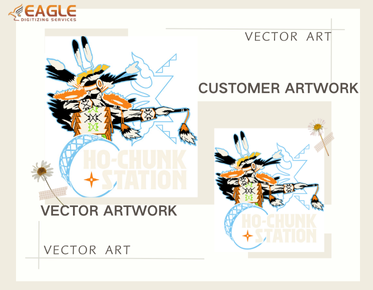Understanding Vector and Source Files: Their Importance in Design and Beyond
In the world of digital design and graphics, the terms "vector file" and "source file" are frequently used, yet they can often be misunderstood by those new to the field. These files are crucial for a variety of applications, from creating scalable graphics to ensuring high-quality prints. Understanding what these files are and why they are important can significantly enhance the quality and flexibility of your design projects. For instance, vector files are essential for maintaining image quality across different sizes and formats.
What is a Vector File?
A vector file is a type of graphic file that uses mathematical equations to represent images. Unlike raster images, which are made up of pixels, vector images are composed of paths defined by a start and end point, along with other points, curves, and angles. This allows vector images to be scaled infinitely without losing quality, making them ideal for logos, icons, and other designs that need to be resized frequently.
Key Characteristics of Vector Files
Vector files are known for their scalability and versatility. They are typically smaller in size compared to raster files, as they do not store information for each individual pixel. Common formats for vector files include SVG, AI, and EPS. These files are often used in professional design software like Adobe Illustrator, where designers can manipulate paths and shapes to create complex images.
Why Are Vector Files Important?
The importance of vector files lies in their ability to maintain image quality at any size. This is particularly crucial for businesses and designers who need to produce high-quality prints or digital graphics. For example, a company logo designed as a vector can be used on a business card or a billboard without any loss of clarity. This flexibility is not possible with raster images, which can become pixelated when enlarged.
Applications of Vector Files
Vector files are used in a wide range of applications, from graphic design and web development to product packaging and advertising. They are also essential in industries like fashion and architecture, where precise and scalable designs are necessary. Moreover, vector files are crucial for vector conversion services, which transform raster images into vector formats for better scalability and quality.
What is a Source File?
A source file is the original file created in a design software, containing all the elements and layers used in the design process. It is the editable version of a design, allowing designers to make changes and adjustments as needed. Source files are essential for collaborative projects, as they enable multiple designers to work on the same project without losing any information.
Importance of Source Files
Source files are crucial for maintaining the integrity and flexibility of a design project. They allow designers to revisit and modify their work, ensuring that the final product meets the client's needs and expectations. Additionally, source files are necessary for creating different versions of a design, such as color variations or different sizes.
Conclusion: The Role of Vector and Source Files in Modern Design
In today's fast-paced digital world, the ability to create high-quality, scalable designs is more important than ever. Vector and source files play a critical role in achieving this goal, providing designers with the tools they need to produce professional and versatile graphics. As technology continues to evolve, the demand for these files will only increase, highlighting their importance in the design industry. Eagle Digitizing excels in delivering professional vector conversion services, transforming creative visions into scalable designs. As you explore the world of digital design, consider how vector and source files can enhance your projects and open up new possibilities for creativity and innovation.



